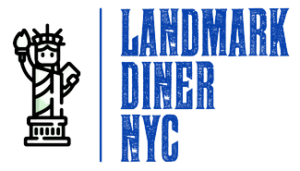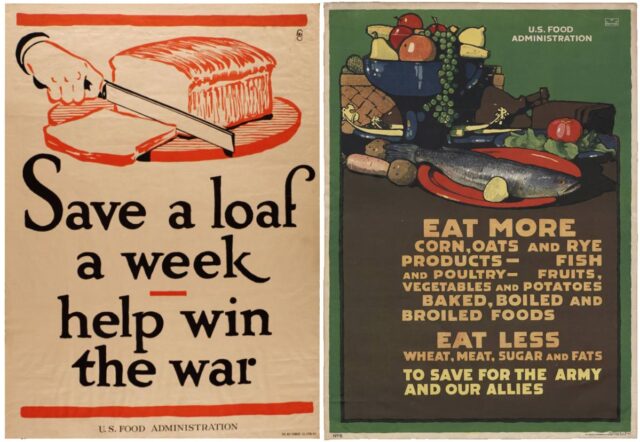The food administration was a government department set up during the First World War to oversee the rationing of food. It was established in 1917 and abolished in 1919.
The food administration ww1 effects was a process that began in the early 1900s. It was created to help with food shortages caused by World War I.
During the United States’ involvement in World War I, the US Food Management was in charge of the administration of the US army’s foreign food supplies as well as the food reserves of allies. One of its main responsibilities was to keep the price of wheat on the US market stable.
People often wonder what the aim of the Food Administration during WWI was.
The United States Food Administration was established on August 10, 1917, by an Act of Congress to enhance national security and defense by promoting the production, conservation, and distribution of food items.
Also, who was in charge of the food administration during World War One? Herbert Hoover was the president of the United States during the time
People often wonder what the gasoline administration was like during WWI.
The Federal Fuel Administration, created by Executive Order 2690 on August 23, 1917, pursuant to the Food and Fuel Control Act, was a World War I-era US government body that regulated the usage of coal and oil.
Who established the Food and Drug Administration?
The National Archives in Fort Worth has copies of the records. With Herbert Hoover as Food Administrator, the United States Food Administration was established by Executive Order No. 2679-A on August 10, 1917, under the authority of the Food and Fuel Control (Lever) Act of the same day.
Answers to Related Questions
Who were the members of the Triple Alliance?
By 1914, the Triple Alliance – Germany, Austria-Hungary, and Italy – had pitted themselves against the Triple Entente – France, Russia, and the United Kingdom. The spark that would ignite a war was about to be lit.
What was the purpose of war bonds?
War bonds are government-issued debt instruments used to fund military operations and other war-related expenses. In reality, contemporary governments fund wars by printing more money, and the purpose of bonds is to withdraw that money from circulation and help manage inflation.
During World War I, how did Americans save food?
The United States Food and Drug Administration advised Americans to limit their fat intake. However, the goal of consuming less fat was not to lose weight; it was to make fats accessible for the war effort. Instead of frying, the Administration encouraged people to bake, broil, or boil their meals to save oil.
What was rationed during World War One?
During World War I, there was rationing. In 1918, the government enacted new rules that established rationing as a fair method of distributing food. Sugar, meat, wheat, butter, margarine, and milk were all rationed to ensure that everyone had enough to eat. Everyone, even King George and Queen Mary, had their own ration cards.
What strategies did people use in order to preserve food?
Drying, salting, pickling, and jellying are four food preservation techniques employed during the colonial era that students will study about in this lesson. They’ll collaborate to discover foods that are preserved in various ways and produce an illustrated booklet explaining one of the methods.
What role did railways play in World War One?
Railways and artillery were two important technologies in defining the First World War. Railways supplied the massive logistical capacity required to sustain massive armies in the field for years, including the delivery of millions of artillery rounds.
How did the United States fund World War One?
Taxes accounted for approximately 22% of the entire cost of the war, while printing money accounted for 20 to 25%, leaving bond issuance to account for 53 to 58 percent of the total cost. Note: Direct money creation is defined as a rise in the stock of high-powered money that is not offset by an increase in the stock of monetary gold.
What was the significance of the fuel administration?
The Fuel Administration’s primary duties were to guarantee sufficient coal and oil production and distribution, as well as to maintain coal and oil prices acceptable. The winter of 1917 was harsh, and the Fuel Administration was blamed for coal shortages.
What were some of the accomplishments of the Department of Energy’s fuel administration?
The Federal Energy Regulatory Commission (FERC) controlled coal supply, rationed gas and heating oil, and instituted daylight savings time. What were some of the accomplishments of the wartime agencies and legislation listed below? Labor conflicts; better working conditions, according to the National War Labor Board.
What does it mean to be a fuel administrator?
ADMINISTRATION OF FUEL. The FUEL ADMINISTRATION was established on August 23, 1917, under the authority of the Lever Act. The agency was in charge of coal and oil production, distribution, and pricing.
What was the role of the War Labor Board?
The National War Labor Board was established to settle labor issues during wartime production, particularly during WWI and WWII. This lesson will teach you about its essential function and achievements.
What was the purpose of the 1917 Espionage Act?
The Espionage Act of 1917 was intended to make espionage criminal. “The practice of spying or the use of spies” is how espionage is defined. Because America had recently joined World War I, the US government enacted this legislation.
What was the role of the League of Nations?
After the Paris Peace Conference in 1919, the League of Nations was established as an international organization. The League’s objectives included disarmament, collective security, resolving international conflicts via negotiation diplomacy, and promoting global welfare.
What was the purpose of signing the The Treaty of Versailles was signed in 1919.?
The Treaty of Versailles established new borders for Germany. Germany was forced to take responsibility for all of the war’s destruction, which was “foisted upon [the Allies] by Germany’s aggressiveness…”, and pay an undetermined sum in reparations.
What contribution did Liberty Bonds make to the military effort?
During World War I, the United States government issued and marketed Liberty Bonds to assist finance the American war effort. The bonds were a means for Americans to show their support for the war, particularly if they couldn’t fight. Between 1917 and 1919, the bonds were issued five times.
What did the National Defense Council do?
During World War I, the United States’ Council of National Defense was established to organize resources and industry in support of the war effort, including transportation, industrial and agricultural output, financial support for the war, and public morale.
What treaty did WW1 come to a conclusion with?
Treaty of Versailles
What was the purpose of the War Industries Board quiz?
During World War I, the War Industries Board (WIB) was formed on July 28, 1917, by the United States government to oversee the procurement of war materials. On national defense and peace conditions, advise President Woodrow Wilson. They attempted to publicize the conflict in order to entice others to participate.
What was the aim of the Public Information Committee?
The Committee on Public Information (1917–1919), commonly known as the Creel Committee or the CPI, was an independent US government organization established to sway public opinion in favor of US involvement in World War I.
The food administration act was a law passed by the United States Congress in 1917 that created the Food Administration (FA). The FA was an agency of the United States government that controlled food distribution and price controls during World War I.
Frequently Asked Questions
What was the food administration quizlet?
The food administration quizlet was a quiz that I created to help students learn about the different types of food and how they are prepared.
What was the slogan of the Food Administration during ww1?
The slogan of the Food Administration during WW1 was Food will win the war.
What was the fuel administration ww1?
The fuel administration ww1 was a British government agency during the First World War.
Related Tags
- who was in charge of the food administration during ww1
- what did the food administration do during ww1
- food administration ww1 quizlet
- food administration definition
- united states food administration




